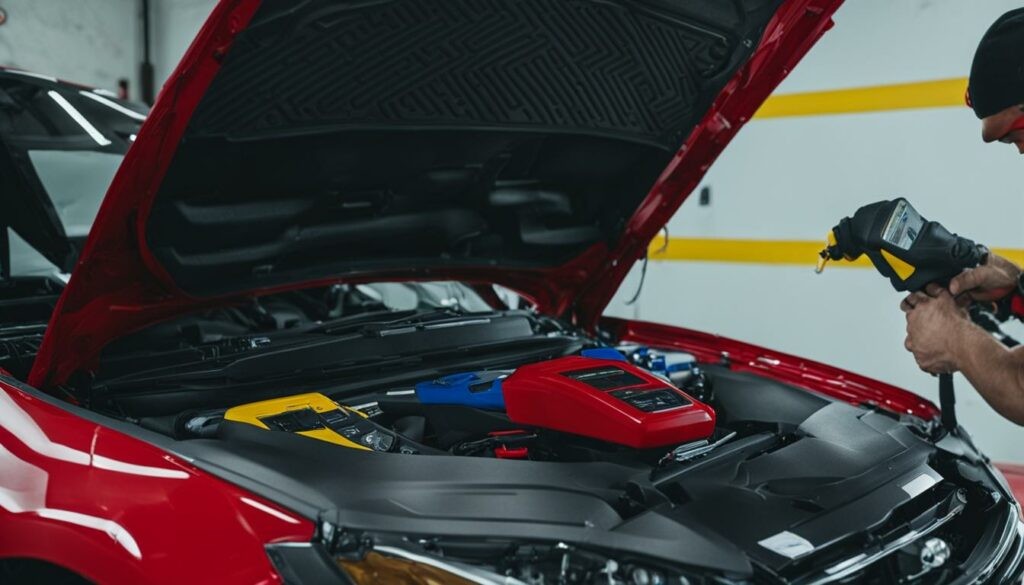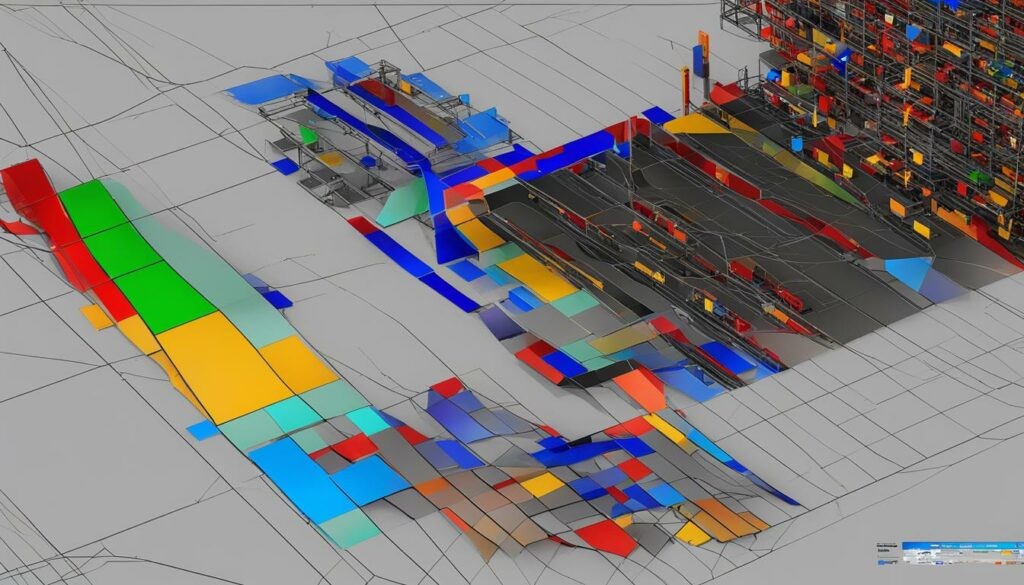Encountering the error Code P0000 during a vehicle diagnostic scan can be perplexing. Many car owners and even some technicians might scratch their heads, wondering what issue this code signifies. The truth is, code P0000 is not your typical diagnostic trouble code (DTC). Instead, it’s classified as an ISO-SAE reserved code, essentially meaning it’s a placeholder with no specific diagnostic meaning. If your scan tool is displaying P0000, it’s crucial to understand what this lack of code actually indicates about your vehicle and how to proceed.
Understanding ISO-SAE Reserved Codes and P0000
The term ISO-SAE reserved code might sound technical, but it’s important in the context of vehicle diagnostics. ISO (International Organization for Standardization) and SAE (Society of Automotive Engineers) are bodies that set standards for the automotive industry, including diagnostic codes. They’ve established a standardized system to ensure consistency across different vehicle makes and models. Within this system, certain codes are designated as “reserved.” P0000 falls into this category.
Unlike typical Pxxxx codes that pinpoint specific problems within your powertrain (engine and transmission), P0000 doesn’t describe a fault. Think of it as a signal from your car’s computer indicating “no fault detected” or, in some cases, “I’m not sure what to tell you.” Different scan tools might interpret and display P0000 with various descriptions such as “No Self Diagnostic Failure Indicated,” “No Diagnostic Trouble Codes Found,” or simply “Unknown Code.” Regardless of the description, the underlying meaning remains the same: P0000 itself isn’t pointing to a problem within your vehicle’s systems.
ISO-SAE Reserved Code Breakdown
To further clarify, let’s look at how ISO-SAE reserved codes like P0000 are categorized:
| ISO-SAE Reserved Code | ISO-SAE Reserved Identifier | ISO-SAE Reserved | ISO-SAE Reserved Definition | ISO-SAE Reserved Meaning |
|---|---|---|---|---|
| P0000 | Not applicable | Not applicable | Not applicable | Not applicable |


This table underscores that P0000 is truly a placeholder. It lacks the typical diagnostic information associated with valid trouble codes.
Symptoms (or Lack Thereof) Associated with Code P0000
One of the most defining characteristics of code P0000 is the absence of direct symptoms. Because it doesn’t represent a real fault, P0000 itself won’t cause your car to run poorly, trigger warning lights, or exhibit any performance issues. The Malfunction Indicator Lamp (MIL), often known as the “check engine light,” may or may not be illuminated when P0000 is present – usually, it remains off because there’s no fault to report.
However, the crucial point is that P0000 can appear alongside other trouble codes. If your vehicle is indeed experiencing problems, those issues will likely be indicated by specific DTCs, not by P0000. Therefore, if you encounter P0000 while diagnosing your car, your primary focus should be on identifying and addressing any other codes that are present.
Symptoms Related to Other Trouble Codes (Examples)
If your scan reveals P0000 alongside other codes, the symptoms you observe will be related to those other codes, not P0000 itself. Here are some examples of symptoms linked to real trouble codes that might occur concurrently with P0000:
- Engine Misfires: Rough idling, engine hesitation, and a flashing check engine light can indicate misfires, often related to ignition or fuel system issues.
- Reduced Fuel Efficiency: A sudden drop in gas mileage could point to problems with the engine’s air-fuel mixture, oxygen sensors, or catalytic converter.
- Unusual Engine Noises: Knocking, ticking, or hissing sounds can signify various engine problems, from valve train issues to exhaust leaks.
- Loss of Engine Power: If your car feels sluggish or struggles to accelerate, it could be due to issues like a clogged catalytic converter, vacuum leaks, or sensor malfunctions.
- Transmission Problems: Rough or delayed shifting, slipping gears, or unusual noises from the transmission can indicate transmission-related DTCs.
Remember, these are examples of symptoms tied to real trouble codes. P0000 itself is not the cause of these problems.
Potential Causes of the P0000 “Code”
Since P0000 isn’t a genuine error code, its appearance usually points to issues with the diagnostic process itself, rather than a problem with your vehicle. The most common causes are related to the scan tool being used:
-
Incompatible or Basic Scan Tool: Cheaper or older scan tools might not be fully compatible with your vehicle’s diagnostic system. They may struggle to interpret the data correctly and default to displaying P0000 when they can’t find a recognizable fault code or when they encounter communication issues. Similarly, a scan tool not designed for your specific vehicle make or model could also produce P0000.
-
Scan Tool Communication Glitches: Sometimes, temporary communication problems between the scan tool and your car’s computer can lead to P0000 being displayed. This might be due to a loose connection, electrical interference, or a software glitch in the scan tool itself.
It’s important to understand that P0000 is rarely, if ever, caused by an actual fault within your car’s engine, transmission, or other systems. It’s almost always related to the diagnostic equipment or process.
Diagnosing and Addressing the P0000 “Code”
If you’re faced with code P0000, here’s a step-by-step approach to diagnosis and resolution:
-
Verify with a Different Scan Tool: The first and most crucial step is to re-scan your vehicle using a different, preferably more advanced, scan tool. A higher-quality OBD-II scanner, especially one known for its compatibility and accuracy, is recommended. This will help you determine if P0000 is a persistent reading or just an artifact of the initial scan tool.
-
Check for Other Trouble Codes: Carefully examine the scan results for any other trouble codes besides P0000. If other codes are present, these are your priority. Diagnose and repair these fault codes first, as they represent actual issues within your vehicle.
-
Clear the P0000 Code (and Re-scan): After addressing any other DTCs, or if no other codes are present, use the scan tool to clear the P0000 code. Then, drive your vehicle for a short period and re-scan to see if P0000 returns. If it doesn’t reappear, it’s likely a false reading from the initial scan.
-
Professional Diagnosis (If Persistent or Symptomatic): If P0000 persists even after using a different scan tool, or if you are experiencing vehicle symptoms but only see P0000, it’s wise to seek professional help. A qualified mechanic with professional-grade diagnostic equipment can perform a more thorough analysis to rule out any underlying issues and ensure accurate code reading.
Important Note: Never start replacing parts or performing repairs based solely on a P0000 code. Always prioritize diagnosing and resolving any real trouble codes first. If P0000 is the only code and your vehicle is running normally, it’s highly unlikely there’s a problem directly related to this “code.”
The Broader Significance of ISO-SAE Reserved Codes in Vehicle Diagnostics
While P0000 itself is not a diagnostic code in the traditional sense, understanding ISO-SAE reserved codes is crucial for grasping the bigger picture of modern vehicle diagnostics. These reserved codes are a fundamental part of the standardized diagnostic system that makes troubleshooting vehicles more efficient and consistent across the industry.
ISO-SAE reserved codes serve as a framework for communication between a vehicle’s complex onboard computer systems and external diagnostic tools. This standardized language ensures that technicians, regardless of their location or the brand of scan tool they use, can interpret diagnostic information in a consistent way.
“ISO-SAE reserved codes are the backbone of modern automotive diagnostics, providing a common language for identifying and addressing vehicle issues across diverse makes and models. They streamline the diagnostic process, saving time and improving accuracy for technicians worldwide.”
The standardization provided by ISO-SAE reserved codes benefits both mechanics and vehicle owners. It leads to:
- Faster and More Accurate Diagnostics: Standardized codes help technicians quickly pinpoint potential problem areas, reducing diagnostic time.
- Improved Repair Efficiency: Clear and consistent codes translate to more efficient repair processes, as technicians can focus on addressing the identified issues directly.
- Enhanced Interoperability: The standardized system ensures that diagnostic tools from different manufacturers can effectively communicate with a wide range of vehicles.
- Industry-Wide Consistency: ISO-SAE reserved codes promote a uniform approach to vehicle diagnostics, benefiting the entire automotive service and repair industry.
In essence, while you might be puzzled by encountering P0000, the system of ISO-SAE reserved codes of which it is a part is designed to make vehicle diagnostics more reliable and effective overall.
Understanding the Severity and Implications of ISO-SAE Reserved Codes
The severity of an ISO-SAE reserved code, including P0000, is generally considered to be irrelevant in terms of vehicle malfunction. These codes, by definition, do not indicate specific faults. Therefore, unlike real DTCs that can signal critical engine or safety issues, P0000 does not carry any inherent severity.
However, it’s crucial to understand the context in which you encounter P0000. If it appears as the only code and your vehicle is operating normally, its implication is simply that your scan tool might be displaying a non-specific reading. In this scenario, the “severity” is negligible – it’s more of a diagnostic artifact than a vehicle problem.
On the other hand, if P0000 is accompanied by other trouble codes, the severity of the situation is determined by those other codes, not by P0000. You must focus on the severity and implications associated with the actual fault codes present.
To clarify the concept of severity levels in the context of vehicle diagnostics in general (not specifically P0000), consider this table:
| Severity Level | Implications |
|---|---|
| Severe | Indicates a critical fault requiring immediate attention. May involve safety risks or potential for significant vehicle damage. Examples: Brake system failure, critical engine misfires. |
| Moderate | Signals a problem that can affect vehicle performance or functionality. Needs timely attention to prevent further issues or decreased efficiency. Examples: Oxygen sensor malfunction, catalytic converter inefficiency. |
| Minor | Suggests a less critical issue that may not immediately impact vehicle operation or safety. Repairs are advisable for long-term vehicle health. Examples: Minor evaporative emission system leak, non-critical sensor reading. |
| Irrelevant (In the case of P0000) | P0000 itself falls into this category. It does not represent a vehicle malfunction and is typically related to scan tool issues. Focus should be on identifying and addressing real trouble codes. |
Conclusion: Don’t Panic Over P0000, Focus on Real Codes
In summary, code P0000 is not a cause for alarm. It is an ISO-SAE reserved identifier and not a valid diagnostic trouble code indicating a fault in your vehicle. If your scan tool displays P0000, it most likely means either “no fault codes detected” or that your scan tool is not fully communicating with your vehicle’s computer in a way that allows for specific code retrieval.
The key takeaways regarding P0000 are:
- It’s not a real error code: P0000 itself doesn’t pinpoint a vehicle problem.
- Scan tool issue likely: Its appearance often suggests using a different or more capable scan tool for accurate diagnostics.
- Prioritize other codes: If P0000 is present with other DTCs, focus on diagnosing and repairing those real codes first.
- No symptoms from P0000: Any symptoms you observe are due to other underlying issues, not P0000.
By understanding that P0000 is a non-specific “code,” you can avoid unnecessary worry and focus on proper diagnostic procedures. Always use reliable scan tools, prioritize addressing valid trouble codes, and seek professional help when needed to ensure accurate vehicle diagnosis and repair.
Frequently Asked Questions About Code P0000
What exactly is the P0000 code?
P0000 is an ISO-SAE reserved identifier and not a valid diagnostic trouble code. It does not indicate a specific problem within your vehicle. It essentially means “no trouble codes found” or is a non-specific reading.
Will all scan tools display the P0000 code?
No, not all scan tools will display P0000. Some basic or incompatible scan tools might show it, while more advanced tools might simply indicate “no codes” or give a clearer message.
Can the P0000 code cause symptoms in my car?
No, P0000 itself does not cause any symptoms. If you experience vehicle problems and see P0000, the symptoms are due to other underlying issues, which may or may not be indicated by other, valid trouble codes.
What are the common reasons for seeing the P0000 code?
The most common reasons for P0000 appearing are using an incompatible, outdated, or basic scan tool, or experiencing a temporary communication glitch between the scan tool and your vehicle’s computer.
How should I handle the P0000 code when diagnosing my car?
If you see P0000, first, re-scan with a different, more reliable scan tool. Check for any other trouble codes. If only P0000 is present and your car is running fine, clear the code and monitor. If it persists or you have symptoms, seek professional diagnosis.
Why are ISO-SAE reserved codes important in vehicle diagnostics?
ISO-SAE reserved codes, even non-specific ones like P0000, are part of a standardized system that ensures consistent communication between vehicles and diagnostic equipment across the automotive industry. This standardization improves diagnostic accuracy and efficiency.
How seriously should I take an ISO-SAE reserved code like P0000?
Generally, P0000 itself should not be taken seriously as an indicator of vehicle malfunction. Its “severity” is irrelevant. Focus on identifying and addressing any real diagnostic trouble codes and vehicle symptoms.
Buy tested tuning file for Adblue / EGR / DPF / Adblue off now!
Register Now or Already have an account, Login now
